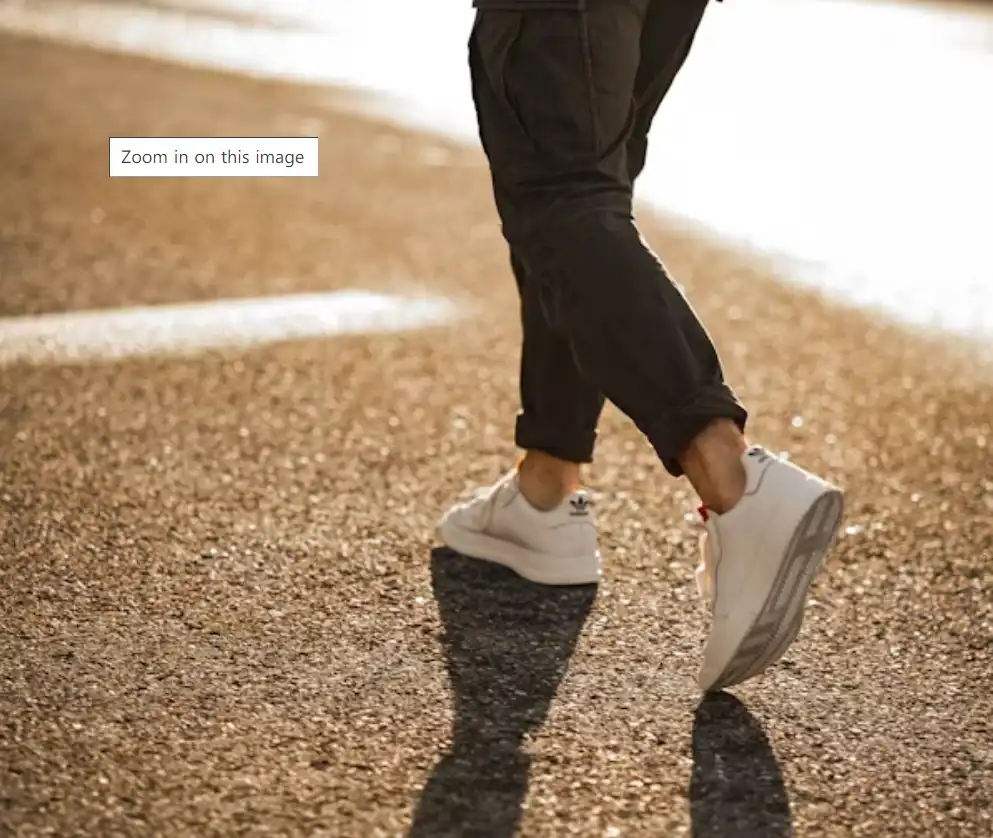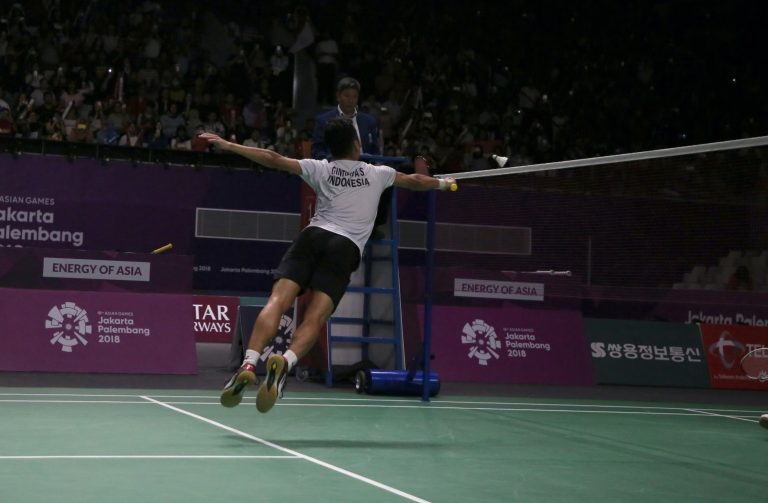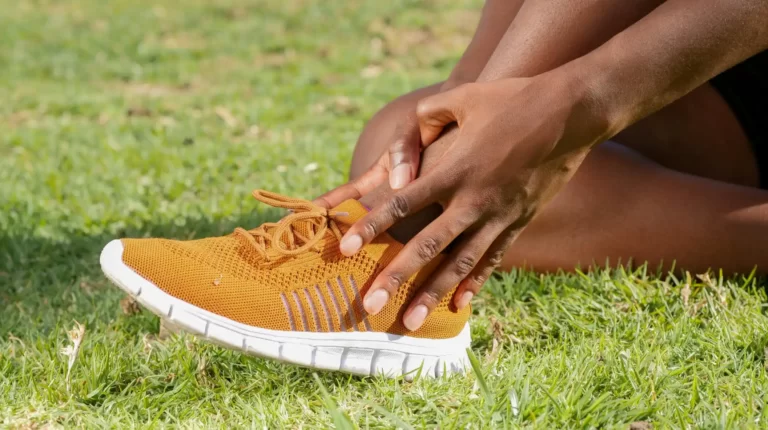Best Insoles for Knee and Back Pain – Supportive & Cushioned
If you’ve ever battled knee and back pain, you know how hard it can be. It makes easy tasks seem very hard. But what if there’s a way to truly ease this pain?
Our carefully chosen insoles are made to reduce knee and back pain. After a lot of testing, we found the best ones. These insoles give great cushioning, arch support, and help your body move right. They’re not just a quick fix; they’re your first step to feeling better.
Don’t put up with pain or push through it. The best insoles for knee and back pain are designed just for you, for all kinds of leg and feet issues. Whether it’s plantar fasciitis, flat feet, or just daily strain, they offer the support you need.
Key Takeaways
- Our insoles are expertly designed to provide superior cushioning and arch support for knee and back pain relief.
- They can help align your feet and ankles, relieving and preventing pain so you can feel better from head to toe.
- Rigorous testing and research have identified the top-performing insoles that offer the best support, comfort, and value.
- These insoles target the root causes of your pain, providing a tailored solution for a wide range of foot and joint conditions.
- Investing in high-quality insoles can be a game-changer in your journey to reclaiming your health and mobility.
Understanding Knee and Back Pain
Most people experience back pain at some point in their lives. It’s the top cause of disability for Americans under 45. The pain might be a dull ache, a sharp pinch, or throbbing. Its impact can be mild or severe. Managing back pain is crucial as it can greatly disrupt your daily life.
What Is Back Pain?
Back pain is any discomfort in the upper, middle, or lower back. Causes can vary, including muscle strain, joint issues, disc troubles, or health conditions. Your back supports the upper body, providing stability. But this makes it prone to injury and pain.
Causes of Back Pain
Poor posture, muscle strains, herniated discs, and arthritis are common back pain causes. Elements such as age, weight, fitness, and job play a role. It’s key to find the cause for good pain management and prevention.
Foot Conditions and Back Pain
Not just back issues, but certain foot problems can cause or worsen back pain. Overpronation, flat feet, and fallen arches affect your lower body alignment. This leads to back muscle and joint strain. Using shoes or orthotics with good arch support and motion control can ease this pain.

How Insoles Can Help Relieve Pain
Our insoles are made to give you comfort and stability. They use great cushioning to help with foot pain and soreness. As we get older, our feet naturally lose some cushioning. Insoles can make up for this loss. They also improve back, knee, and hip pain by aligning your feet and ankles better.
Alignment and Posture Improvement
Our orthotic insoles reduce too much side-to-side foot movement. This can lower the stress on your knees during activities. Fixing how your feet are aligned improves your posture and how weight is spread. This can help lower body pain.
Arch Support and Shock Absorption
Insoles with special arch support spread out pressure on your foot. They stop extra stress on the knees. The cushioning and shock absorption in our insoles lower pain from conditions like osteoarthritis or tendinitis.
Cushioning and Comfort
Our insoles help spread pressure evenly on your feet. This can lower injury risk and knee pain. They come in materials like memory foam and gel for various support and comfort levels. This helps ease knee discomfort.

Choosing the Right Insoles for Your Needs
Selecting insoles to fight knee and back pain is important. You need to think about your arch type and how much support you need. If your feet are flat, look for insoles that lift the arch and control motion. This can help stop your feet from turning inward too much. If you have high arches, you’ll want insoles that are soft and bendy. These will keep your feet from getting sore.
Arch Type and Insole Selection
There are three arch types: neutral, low (flat feet), and high. Knowing your arch type helps find the best insole. People with flat feet or low arches need firm support to keep their feet steady. This can stop their feet from rolling in too much. Those with high arches do better with softer support. This kind of support is more about comfort and shock absorption than about keeping your foot still.
Cushioning and Support Levels
The amount of cushion and support in an insole really matters. Soft materials like foam and gel help absorb the shock of each step. They also reduce how much pressure is on your knees and back. A firmer arch support also helps by keeping your foot in the right position. It’s all about picking the insole that matches how much cushion and support you need.
Top 6 Best Insoles for Knee and Back Pain
We put several insoles to the test to find the best ones for knee and back pain. Our research singled out some top choices:
Roamingfeet ComfortMax: Flat Feet Insoles
For people with flat feet, Roamingfeet ComfortMax insoles work wonders. They boost support and comfort thanks to their arch support and cushioned design. This setup makes sure your knees and back don’t get too strained.
Pros
- Provides excellent arch support and absorbs shock with every step, making it ideal for plantar fasciitis relief.
- The foam insole has a high arch design, providing medium arch support for men and high arch support for women.
- Fits comfortably in boots and shoes, making it perfect for work or casual wear.
Cons
- The arch support may be too firm for some users.
- The insole may not fit perfectly in all shoe sizes.
- May not provide enough cushioning for those with very sensitive feet.
These insoles are made from durable and cushioned foam material that absorbs shock and provides comfort with every step. The ComfortMax insoles Heavy Duty Support Pain Relief Orthotics are designed to fit most shoe sizes, with a men’s 6-16 / women’s 4-12 insole size for universal fit.
We found that these insoles provide excellent support and relief for knee and back pain, making them a great choice for those with plantar fasciitis. The high arch design and heavy-duty support provide stability and comfort for all-day wear. The insoles fit comfortably in boots and shoes, making them a versatile option for any occasion.
Dr. Scholl’s® Prevent Pain Lower Body Protective Insoles
Many turn to Dr. Scholl’s Prevent Pain insoles for relief from knee and back troubles. They’ve got great cushioning and arch support to handle shock and keep your feet in the right place. This leads to better comfort and steadiness.
Pros
- The Tri-Protect SystemTM stops the cause of lower body pain before it occurs.
- Full foot combination of cushioning, support, and shock absorption defends against the muscle co-contraction that leads to lower body joint pain.
- The shock-absorbing heel manages stress beginning with the heel.
Cons
- The size adjustment only changes the length of the insert.
- The position of the heel and arch are rigidly set and cannot be adjusted.
- May not provide relief for severe pre-existing conditions.
These insoles are designed to prevent pain from muscle-induced joint stiffness and strain caused by conditions or activities like recent reduction in activity or weight gain, flat feet, overpronation, over-supination, bad posture, heavy or uneven pressure, and working, walking, or running on hard surfaces. The impact-absorbing cushioning protects you and distributes pressure across your entire foot, while the flexible arch support adjusts with your activity level or physical changes.
MOVE All Day Comfort Insole
The MOVE All Day Comfort Insole stands out with its top-notch cushioning and support. It’s a favorite for those dealing with knee and back pain. It does a great job absorbing shock and supporting your arches, reducing discomfort all day long.
Pros
- The Move Recharge Foam provides long-lasting comfort and reduces stress on the feet, knees, and back.
- The X-Frame Torsional Support system offers heel and midfoot stability while allowing maximum movement, ensuring protection and comfort throughout the day.
- Active Heel Technology minimizes pressure points in sensitive areas of the foot, enhancing overall comfort and reducing discomfort.
Cons
- The insoles may raise the footbed too much for some users.
- The price point may be higher than other insoles on the market.
- The insoles may take up more room in the shoe than other insoles.
Our experience with the MOVE All Day Comfort Insole has been nothing but positive. The Move Recharge Foam provides ultimate comfort and reduces stress on the feet, knees, and back. The X-Frame Torsional Support system offers heel and midfoot stability while allowing maximum movement, ensuring protection and comfort throughout the day. The Active Heel Technology minimizes pressure points in sensitive areas of the foot, enhancing overall comfort and reducing discomfort.
WALK·HERO COMFORT AND SUPPORT
WALK·HERO’s Comfort and Support insoles offer a custom fit and spot-on pain relief. They use high-tech arch support and cushioning to stabilize your feet. This means less strain on your knees and fewer aches in your back.
Pros
- The arch support improves foot and leg alignment, enhances comfort, and helps ease stress and discomfort caused by flat feet, bunions, arthritis, Plantar Fasciitis, and Achilles Tendonitis.
- The deep heel cup helps maintain correct foot positioning, protects your heel during heavy impact, and stabilizes the foot.
- The premium EVA material is excellent for shock absorption and foot fatigue, while the fabric helps keep your feet cool.
Cons
- The insoles provide only moderate control and support for walking or casual hiking shoes, work shoes, and boots.
- The arch may be too high for some users, causing soreness.
- The packaging is resealable, but using scissors to open it may damage the packaging and cause issues with returns.
We found the WALK·HERO COMFORT AND SUPPORT insoles to be a great solution for knee and back pain. The arch support and deep heel cup provided excellent comfort and stability, while the premium EVA material helped absorb shock and reduce foot fatigue. We appreciated how the fabric kept our feet cool during extended use.
PCSsole Heavy Duty Arch Support Insoles
For high arches or bad foot conditions, PCSsole’s Heavy Duty Arch Support Insoles are key. They’re really firm and supportive, with deep heel cups. This will help correct overpronation and give you the stability you need to ease knee and back pain.
Pros
- Provides maximum cushioning and support for those over 220 pounds
- Relieves foot pain associated with plantar fasciitis and other common foot conditions
- Fits a variety of shoe types with no trimming required
Cons
- May not provide enough heel support for some users
- Thickness may not be suitable for all shoe types
- May not be as durable as other insoles on the market
These insoles offer heavy duty support with maximum cushioning, making them a great choice for those seeking relief from knee and back pain. They are designed for people over 220 pounds and offer 3.5cm semi-rigid arch support that is firm but flexible. The dual layer cushion provides long-lasting comfort and shock absorption to protect your feet during athletic activity, standing or walking.
VALSOLE Orthotic Insoles
VALSOLE’s Orthotic Insoles are made to tackle pain and offer total support. They use arch support, cushioning, and motion control as a trio. This helps line up your feet right and lower the stress on your knees and back, keeping you comfy all day.
Pros
- Provides strong arch support and shock absorption
- Reduces foot, leg, knee, and back pain
- Adaptable for work boots and most shoes
Cons
- May force toes and foot up into the shoe uppers, making the shoe feel too small
- Heel may pop out of the shoe when walking
- May need to get a larger shoe size
These insoles are made for individuals over 220lbs and provide extra strong high arch support with shock guard technology. They are designed to relieve foot and leg fatigue, reduce lower back pain, and distribute weight to reduce the impact of each step. They offer rigid arch support to reduce the overstretch of Plantar Fasciitis and help ease stress and pain caused by flat feet, fallen arches, bunions, low back pain, diabetes, Achilles Tendonitis, and Ball of Foot pain. The Poron heel pad provides excellent shock absorption and pain relief, while the black hard TPU material supports the arch of your foot and wraps your heel when running or jogging. The good fabric reduces odor and keeps the feet fresh.
Insole Materials and Construction
An insole’s materials and how it’s made are key for easing pain and giving support. They need to be made of top-notch foam, such as polyurethane or EVA, to soak up shock. This lessens the pressures felt by your feet, knees, and back. The thickness and how dense the foam is also matter for the support it gives.
Foam and Cushioning Materials
We studied insoles with different kinds of cushioning. Our tests included foam, nylon, neoprene, and terrycloth. The standouts were those with high-density polyurethane foam or EVA. They shine for their ability to absorb shock and comfort over time. These types of materials offer soft, yet firm support. They are great for easing knee and back pain.
Arch Support and Heel Cup Design
Good arch support and a deep heel cup are a must for insoles that help with knee and back pain. The insoles we back have specially shaped arches and heel cups. They keep the feet and ankles in a healthy line. This does wonders for your posture and steadiness, reducing strain on your knees and lower back.
Breathability and Odor Control
Insoles should also let your feet breathe and control smells. The best ones use materials like nylon and neoprene that help air move and draw moisture away. This keeps your feet fresh and dry. Some also stop smelly bacteria from growing.
By choosing quality materials and design, the insoles we rate the highest offer the right mix of cushion, support, and freshness. This combo is perfect for cutting knee and back pain.
Proper Footwear and Insole Compatibility
Picking the right shoes to match your insoles is key for reducing pain. Everyday shoes should not be too soft or flexible. They should have firm support and light cushioning. If you have flat feet or walk oddly, consider motion control or stability shoes.
Shoes for Different Activities
The kind of insole you use depends on what you do. Thicker insoles fit best in athletic shoes for added comfort. Dress shoes work well with thinner insoles. It’s vital to pair the right shoe and insole to support your feet, knees, and back for every movement.
Trimming and Fitting Insoles
Insoles can be cut to fit your shoes and foot size. This personal touch means the insole fits your foot snugly. A perfect fit supports your arch and adds extra cushion. It makes your insoles more comfortable and effective for easing pain.
| Insole Feature | Benefit |
|---|---|
| Firm Support | Helps stabilize the foot and prevent excessive pronation or supination, which can lead to knee and back pain. |
| Cushioning | Absorbs shock and reduces pressure on the feet, knees, and back during activities like walking or running. |
| Motion Control | Provides stability and prevents excessive movement of the foot, which can contribute to pain in the lower extremities. |
| Arch Support | Helps maintain proper alignment and distribution of weight across the foot, alleviating strain on the knees and back. |
Choosing the right insoles for your shoes and how active you are makes a big difference. It’s about finding the best combo for your comfort, support, and pain relief.
Tips for Maximizing Insole Benefits
For your insoles to work their best, breaking them in right and changing them when needed is key. By following these tips, you can make the most of your insoles. They’ll keep offering the comfort and support you want.
Breaking In New Insoles
Starting with new insoles means you should take it slow. Begin by wearing them for a short time. Then, increase the time slowly. This lets the insoles adjust to your feet bit by bit, which feels better in the long run.
At the start, you might feel a bit of discomfort or find some pressure points. This is normal. It should get better as the insoles shape to you. If it doesn’t, trying a different insole might help, one that fits and supports your arch type better.
Replacing Insoles Regularly
Remember, insoles don’t last forever. You should change them every 6 to 12 months, depending on how often you use them. This keeps their comfort, support, and durability top-notch. As time goes on, the cushion and material wear down, which affects their shock absorption and arch support.
Watch for signs like the foam getting flat or the insoles just not feeling right. This is a sign they need to be changed. By replacing them on the regular, you make sure you still get all the pain-relieving benefits and support your feet need.
Preventative Measures and Lifestyle Changes
Add supportive insoles and make lifestyle changes to deal with knee and back pain. Do stretching and strengthening exercises for lower body and core. This will boost flexibility, stability, and alignment.
Stretching and Strengthening Exercises
Use leg extensions, squats, and hip bridges to fix valgus knee issues. IT band stretches and inner thigh stretches reduce tension. They make your knees work better.
Proper Posture and Body Mechanics
Good posture and body mechanics help your knees and back. Pick shoes with proper arch support and stability. Also, manage your weight for less joint pain.
If knee pain stays despite efforts, see a physical therapist, orthopedic specialist, or podiatrist. They will create a personal plan for you. This plan focuses on pain management and fixing knee and back problems.
Conclusion
Choosing the right insoles can really help with knee and back pain. They offer great cushioning, support, and help correct your posture. This makes a big difference in how you feel every day and moves better. Don’t forget to do some stretching and strength exercises. It’s also important to make some changes in your daily habits. This will make the insoles work even better for you.
If you struggle with knee or back pain, the right insoles can change your life. Work with your doctor or a specialist. They can tell you what your feet really need. Then, they can help you pick the best insoles. These insoles should give you perfect cushioning, support, and help fix your posture. They will help you hurt less and enjoy life more.
It’s key to act early to deal with knee and back pain. Use the right insoles and make some lifestyle changes. This can give you lasting pain relief and make you healthier overall. With the right insoles and a focus on health, you will feel better. You’ll move more and enjoy life to the fullest.







